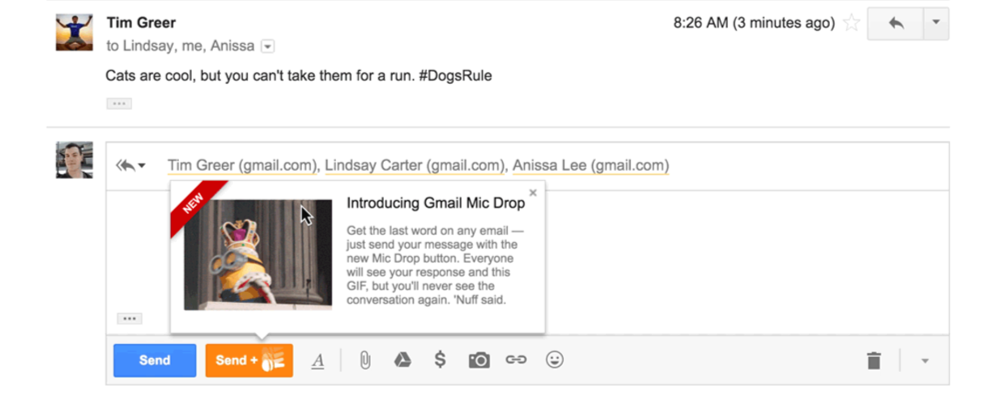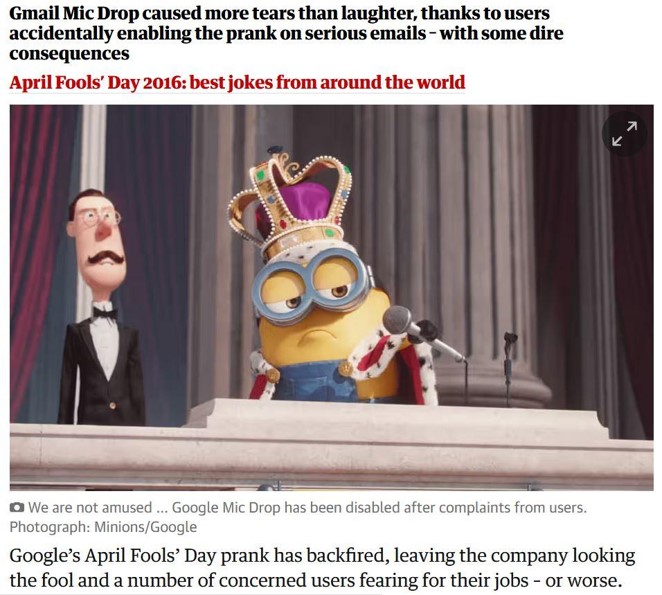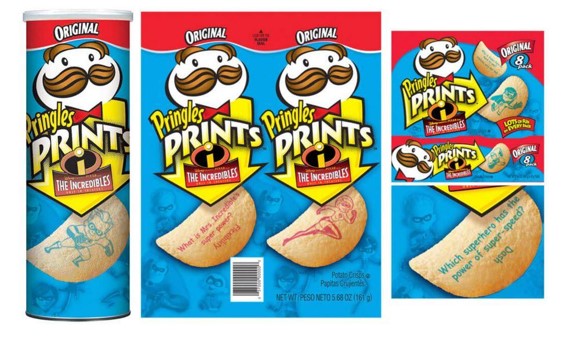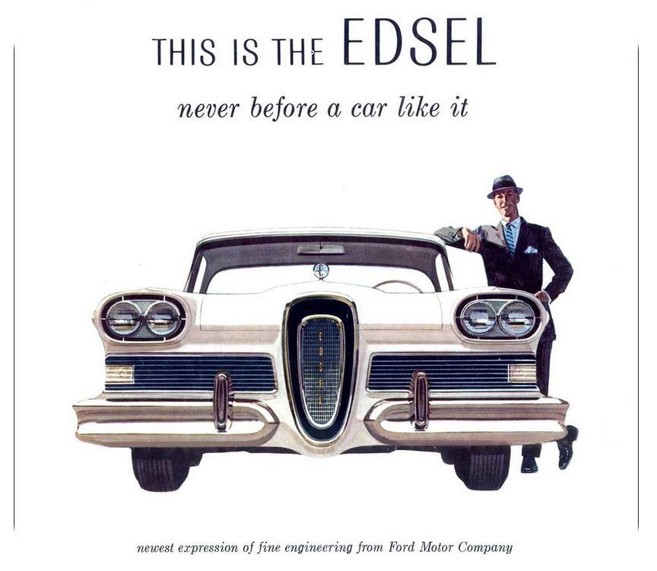- Home
- Friday Column
- The World’s Biggest Marketin ...

Lack of market research, inappropriate messaging, over-promising and under-delivering, neglecting customer feedback, or missed technical glitches – these are not a full list of reasons for failed advertising campaigns. From time to time marketing failures happen with every brand, none of which has a 100% immunity from bad ad campaigns.
Even big marketing failures happen most of the time not due to lack of effort, experience, or brutal negligence but often for reasons less obvious and, sometimes, accidental. While it is crucial to constantly work on advancing your marketing strategy and experience, it is important to accept the fact that mistakes will happen. What’s more important is being able to learn even from the worst marketing campaigns.
In this article, we collected case studies of marketing failures from four of the world’s biggest companies for analyzing, learning from and succeeding.
Case study #1. Drop the Mic…and your reputation: Google’s April Fools’ Day mishap
In an attempt to infuse humor into its email service for April Fools’ Day in 2016, Google introduced a “Mic Drop” feature in Gmail. This feature added a button next to the traditional send button, which, when clicked, would attach a GIF of a Minion dropping a microphone to the email, signifying a conversation-ending move. The tech giant goal was to offer users a playful way to conclude an email thread.

What went wrong:
The inclusion of the “Mic Drop” button in Gmail’s interface became one of the marketing campaigns that failed due to its unlucky placement. The button was located too close to the standard send button, leading to users accidentally sending the Minion GIF in serious and professional emails. This oversight in design led to confusion, embarrassment, and in some cases, even professional implications for users who accidentally sent the GIF in work-related emails.

Public response:
The public and user reaction to the “Mic Drop” feature was overwhelmingly negative. Users spilled their frustration over social media and forums and shared their stories caused by the accidental use of the feature. The complaints were particularly focused on the lack of consideration for the professional context in which Gmail is often used.
Company’s response:
Google quickly realized the severity of the mistake and disabled the “Mic Drop” feature within hours of its release. The company issued a public apology on its official blog, acknowledging that the feature had caused more headaches than laughter and that it had been removed. Google expressed regret for any trouble the feature had caused its users and thanked them for their feedback, highlighting the importance of user experience in product design and features.
Resolution:
The swift removal of the “Mic Drop” feature and Google’s swift apology helped to prevent the immediate backlash from growing. While the event remained a memorable blunder in Google’s history, it did not have a long-term negative impact on the brand. Google’s reputation for innovation and user-centric design remained intact. Nonetheless, the episode served as a lesson in the risks of incorporating humor into functional tools.
Lessons learned:
The “Mic Drop” incident provides a great narrative about the importance of thoughtful technical design and consideration of context in product features. Key lessons from this case study include:
- User context is crucial: While incorporating additional features into your product might be a good idea, especially for special occasions like Valentine’s Day or Halloween, it should always be guided by the principle of appropriateness. Considering your product within a wider context can help to avoid unintended consequences.
- Pre-launch testing: Identifying potential issues before they reach the public and incorporating user feedback can save a company an apology and, in some cases, a reputation.
- Quick response: Responding to user feedback promptly and in a way that allows users to feel heard and understood might be the second-best decision (after avoiding a mistake altogether) when your advertising fails.
- Mixing humor with professionalism: Humor in professional settings is a fine line to walk, while the stakes might be high. Go for fun only in cases when you are sure that a joke won’t compromise the user’s experience or your professional reputation.
Case study #2. Ink-edible misstep: The “Pringles Print” fiasco
Background:“Pringles Prints” is one of the bright examples of unsuccessful marketing campaigns in the food industry. In the early 2000s, Pringles decided to come up with a unique idea by combining edible ink with their famous chips. By placing edible ink texts such as trivia, jokes, and fun facts on their product, the company wanted to make snack time more engaging and interactive, potentially setting Pringles apart in the highly competitive snack market.

Public response:
The public and consumer reaction to Pringle’s creativity was lukewarm at best. Social media mentions, although not as prevalent as they would be today, along with press coverage, often focused on the novelty of the idea rather than its appeal. “Pringles Prints” became one of the failed advertising campaigns with a clear disconnection between the product’s unique selling proposition and consumer expectations. As a result, the company had a poor sales performance and lack of enthusiasm in the market.
Company’s response:
The company focused its efforts on reassuring its consumers about the safety and quality of the edible ink used. Despite these attempts, the “Prints” line did not manage to win back consumer trust or achieve the desired market penetration. Eventually, Pringles refocused its efforts on traditional and new flavor innovations without the printed concept.
Resolution:
After the fiasco of the campaign, Pringles never resumed their attempts to revive the concept of printable food. The failure had a minimal long-term impact on the brand, thanks to Pringles’ strong market presence and continued innovation in flavors and packaging. The brand managed to maintain its position as a leading snack provider globally, learning from the “Prints” episode and moving forward with new product ideas.
Lessons learned:
- To ensure the success of a marketing campaign and avoid turning your new product launch into one of the worst ad campaigns, it is crucial to conduct market research before turning to production, design, or even an idea.
- In case some innovative product launch is planned, it is essential to assess market readiness and a genuine demand for such a radical intro. By understanding consumer preferences and skepticism it is possible to use novelty to your advantage.
- Besides, and particularly in the case of innovative products, marketing messages should clearly communicate the benefits and safety of new and unknown features to avoid consumer confusion and rejection.
- Finally, a company’s ability to be flexible and responsive to customers’ feedback to make fast changes, provide missing communication, or even discontinue a product, is crucial for overall company success and brand reputation.
Case study #3. Ford Edsel: The road from hype to wipeout
Background:
The Ford Edsel, launched in 1958, became one of the most famous failed marketing campaigns in automotive history, followed by similarly bad product failure. Named after Henry Ford’s son, Edsel Ford, the car was meant to fill the gap in Ford’s lineup between the mid-level and luxury segments.
The car was highly anticipated due to an intense preceding marketing campaign and was supposed to become a revolutionary new car with advanced features and unique styling.

What went wrong:
Despite an active company’s advertisement and initial public excitement, the company lost $350 million on this campaign and product. So, how could such a heavily subsidized project turn into one of the worst advertising campaigns? The reasons were quite numerous and substantial:
- Product positioning and timing: The Edsel was introduced during a recession, a time when consumers were looking for smaller, more economical cars rather than the larger, more expensive models like the Edsel.
- Over-hyping: Ford’s marketing campaign created unrealistic public expectations. On the 4th of September 1957 2.85 million Americans visited Edsel car dealers – encouraged by the company’s marketing campaign. Nonetheless, when the Edsel was finally released, it failed to live up to the hype, disappointing many potential buyers.
- Design and quality issues: Edsel’s design was considered unattractive by many, with its distinctive massive front grille part being particularly discouraging. Additionally, early models were plagued with quality control issues, further damaging its reputation.
- Lack of market research: One of the most fundamental of Ford’s mistakes with Edsel was misjudging the market’s needs and desires. While the company conducted the actual research, the decision about the car’s design was based nonetheless, mainly on the opinions of the Board. As a result, the car was doomed to compete in a segment not only shrinking but also already well-served by existing models from Ford and other manufacturers, such as General Motors.
Public response:
The public response to the Edsel model was overwhelmingly negative. Sales were far below expectations, and the car quickly became a symbol of commercial failure. Both the media and the public mocked its design and perceived lack of purpose in the market. Despite efforts to revise the line in subsequent years, Edsel’s reputation was irrevocably damaged.
Company’s response:
Ford attempted to address the issues with the Edsel by making adjustments to the car’s design and features in the 1959 and 1960 models. However, these changes were not enough to overcome the negative perception. Recognizing the brand’s failure, Ford discontinued the Edsel in November 1959, just over two years after its launch. The company absorbed significant financial losses, estimated to be hundreds of millions of dollars in today’s terms.
Resolution:
The discontinuation of the Edsel marked the end of one of the most notable failures in automotive history. Ford’s attempt to salvage the brand was unsuccessful, and Edsel’s failure had lasting impacts on the company’s approach to product development and marketing. Ford became more cautious in its market research and product launches, seeking to avoid another disaster of Edsel’s magnitude.
Lessons learned:
The story of Edsel can be rightfully considered as a perfect case of how not to approach product research, development, and promotion. So, what are the key takeaways from Ford’s failed marketing campaign?
- Market research is crucial. Understanding consumer needs and market trends, especially if the launch of a costly and complex product is planned, can be a cost (and a reputation) savior. On the contrary, misjudging the market can lead to costly failures.
- While promoting your product using heavy marketing campaigns, it is important to be aware that over-hyping can backfire if the product cannot live up to expectations that were so pumped up. Especially if before that you did not conduct proper market research.
- Timing matters. In some cases, it matters a lot. Even a properly designed and publicly accepted product that was launched at the wrong time can be doomed to failure. Generally, economic recessions, wars, and major political turbulences are not the best conditions for releasing costly or controversial products.
- Finally, something that goes without saying is product quality. Products flawed with quality issues don’t have many chances for long-term success. Most likely even loyal customers will be lost along the way when offered a product that works only half the time or all the time but not in the right way or…well, you get an idea.
To Sum Up
Cases from above represent a wide array of industries and a variety of bad advertising examples. This diversity of mistakes, often fueled by a lack of predictability from the market, proves that sometimes even the best intentions or a spotless brand reputation cannot guarantee product success.
While not fully avoidable, the consequences of these or similar mistakes can, nonetheless, be minimized by a proper reaction from the company’s side. Prompt responses to critique combined with a sincere apology and sympathy towards sensitive topics can be real reputation saviors after failed marketing campaigns.
When your marketing campaign is driven by a sincere desire to address customers’ pain points and to engage with them meaningfully, it lays the foundation for a resilient marketing strategy. It won’t prevent you from having bad ad campaigns forever but will guarantee a sustainable brand reputation based on agility, sensitivity, and consumer engagement.



